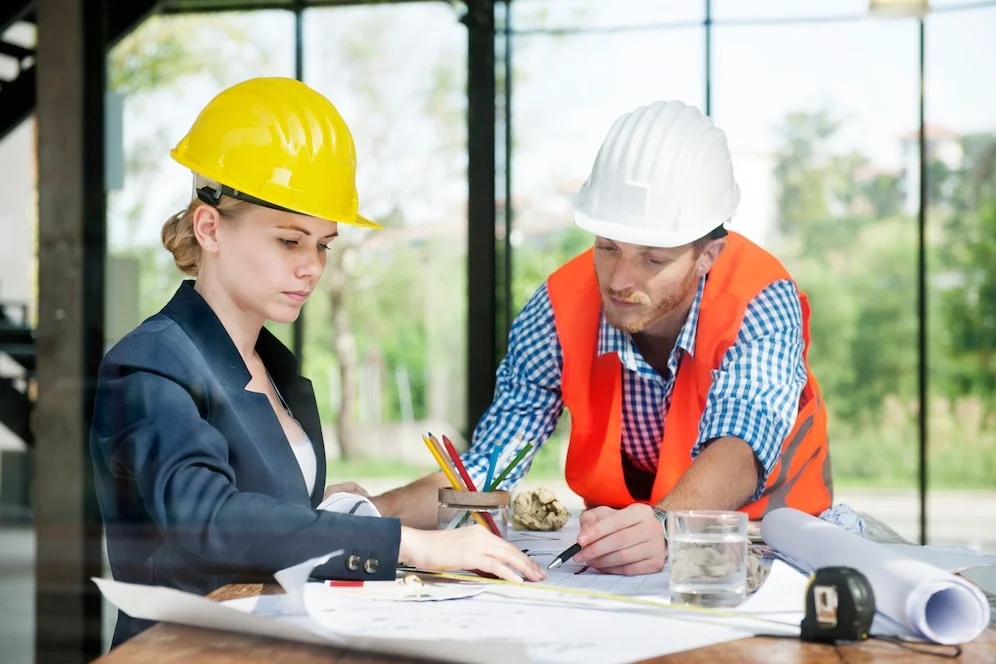Construction has always been a high-risk industry, but today’s job sites look much different than they did a decade ago. Gone are the days when safety was an afterthought, with workers left to navigate hazards without the proper training or protection. Thanks to evolving regulations, innovative safety protocols, and ongoing education, construction sites are becoming safer, more efficient, and better prepared for the unexpected.
The industry is proving that when safety and education work together, everyone benefits. From specialized training programs to cutting-edge safety technologies, businesses are investing in smarter solutions that protect workers while keeping projects on track. Here’s a closer look at how safety standards and education are reshaping construction sites for the better.
Centrifugal Pump Safety Reduces Risks on Job Sites
Industrial pumps are a staple on many construction sites, keeping everything from water removal to fuel transfer running smoothly. But with great power comes great responsibility—improper use or maintenance can lead to catastrophic failures, injuries, or environmental damage. That’s why centrifugal pump safety is a critical part of modern job site training and compliance.
Proper handling, routine inspections, and adherence to manufacturer guidelines are essential for ensuring these pumps operate safely. Workers are now being trained to recognize warning signs of pump failure, such as excessive vibration or leaks, before they turn into serious problems. In addition, automated safety systems are helping to prevent overheating and mechanical breakdowns, reducing the risk of accidents. Construction sites that prioritize pump safety not only protect their workers but also avoid costly downtime caused by equipment failures.
State-Specific Training Programs for Safety
Construction safety is not a one-size-fits-all approach. Every state has its own regulations, job site challenges, and workforce needs, which is why specialized training programs are making a significant impact. One of the most effective examples of this is SST training, which provides site-specific instruction tailored to local laws and industry best practices.
These programs go beyond generic safety education by incorporating real-world scenarios and location-specific hazards. For example, construction workers in urban areas may face different risks than those working on remote infrastructure projects. SST training ensures that workers understand how to navigate their specific environments safely.
Another major advantage of these programs is compliance. Many states now require industry professionals to complete specialized training before stepping onto a job site. By investing in these courses, construction companies will meet regulatory requirements and also foster a culture of safety that reduces workplace injuries. Workers who complete state-specific training are better equipped to handle risks, use equipment properly, and recognize potential hazards before they turn into major problems.
Technology Enhances Construction Safety
Modern construction sites are embracing technology in ways that would have seemed futuristic just a few years ago. From wearable safety gear to AI-powered monitoring systems, technology is playing a major role in preventing accidents and keeping workers safe.
One of the biggest game-changers is real-time hazard detection. Smart sensors and drones are now being used to monitor job sites, identifying safety violations, structural weaknesses, or environmental hazards before they pose a threat. These systems provide instant alerts, allowing managers to take corrective action before an accident occurs.
Wearable technology is also making an impact. Smart helmets equipped with something like augmented reality can provide workers with real-time instructions and safety alerts. Meanwhile, connected vests and wristbands can track vital signs, ensuring that employees aren’t experiencing fatigue or heat stress while on the job.
Mental Health Training in Construction Safety
Physical hazards aren’t the only risks on a construction site. Stress, fatigue, and mental health struggles can lead to dangerous lapses in judgment, putting workers at risk for injury or burnout. Recognizing this, companies are now incorporating mental health education into their safety programs.
Studies show that construction workers are much more likely than those in other industries to experience stress-related issues, whether due to tight deadlines, physical demands, or job insecurity. Left unaddressed, these challenges can lead to exhaustion, impaired decision-making, and even accidents. That’s why businesses are implementing wellness programs designed to help workers recognize signs of fatigue, stress, and emotional distress. Some companies are even providing training on how to handle high-pressure situations, offering stress management workshops and peer-support programs.
Strict PPE Requirements Protect Workers
Personal protective equipment (PPE) has always been a fundamental part of construction safety, but recent advancements are taking it to a whole new level. Modern PPE is not just about wearing a hard hat and steel-toed boots—it’s about using cutting-edge materials and smart technology to offer better protection without sacrificing comfort.
Today’s PPE includes self-cooling workwear for hot environments, lightweight exoskeletons that reduce strain on the body, and advanced respiratory protection that filters out harmful particulates. These innovations are making it easier for workers to stay safe without compromising mobility or comfort.
Strict enforcement of PPE policies is also becoming a key focus. Companies are adopting real-time PPE compliance monitoring systems, using cameras and AI to ensure that all workers are properly outfitted before entering hazardous areas. With increased accountability and better equipment, construction workers are now better protected than ever.







